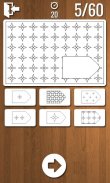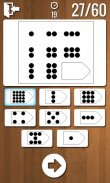







Raven test

คำอธิบายของRaven test
It is the most common and popular test administered to groups ranging from 5-year-olds to the elderly. It is made of 60 multiple choice questions, listed in order of difficulty. This format is designed to measure the test-taker's reasoning ability, the eductive ("meaning-making") component of Spearman's g. (g is often referred to as general intelligence.) The tests were originally developed by John C. Raven in 1936. In each test item, the subject is asked to identify the missing element that completes a pattern.</div> <div jsname="WJz9Hc" style="display:none">มันคือการทดสอบที่พบมากที่สุดและเป็นที่นิยมการบริหารงานให้กับกลุ่มตั้งแต่ 5 ขวบผู้สูงอายุ มันทำจาก 60 คำถามหลายทางเลือกที่ระบุไว้ในคำสั่งของความยากลำบาก รูปแบบนี้ถูกออกแบบมาเพื่อวัดการทดสอบความสามารถในการใช้เหตุผลเมล์ของ eductive ("ความหมายทำ") ส่วนประกอบของกสเปียร์แมน (ชมักจะเรียกว่าปัญญาทั่วไป.) การทดสอบมีการพัฒนามาโดยจอห์นซีกาในปี 1936 ในแต่ละรายการทดสอบเรื่องจะถูกขอให้ระบุองค์ประกอบขาดหายไปที่เสร็จสมบูรณ์แบบ</div> <div class="show-more-end">


























